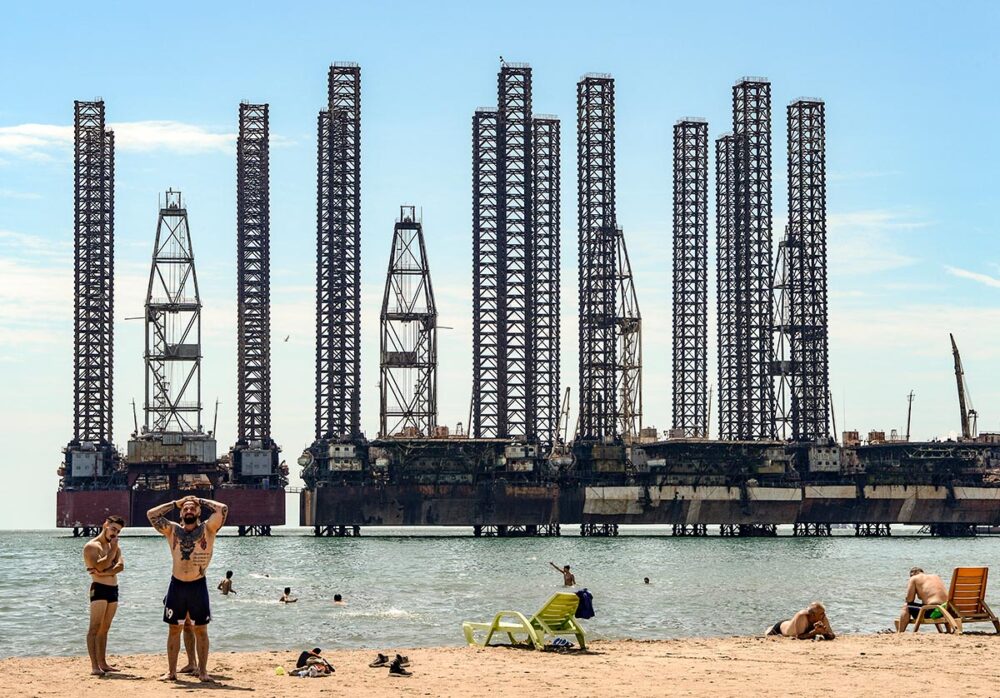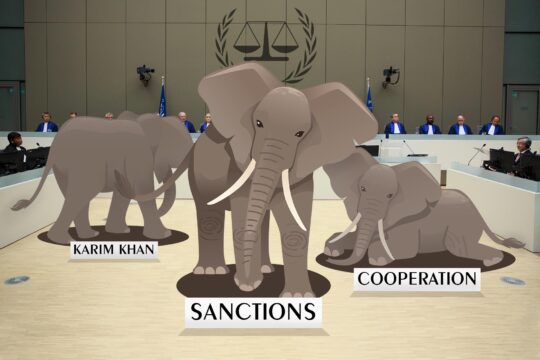The 29th Conference of the Parties (COP29) opens on 11 November 2024 in Baku, Azerbaijan, on the theme of “Investing in a livable planet for all”. “A key focus of COP29 will be on finance,” say the organisers, “as trillions of dollars are required for countries to (...) protect lives and livelihoods from the worsening impacts of climate change”. The COP29 climate conference “will also be a key moment for countries to present their updated national climate action plans”. In order to comply with the framework of the Paris agreement signed at COP21 in 2015, these greenhouse gas emission reduction trajectories must make it possible to “limit global warming to 1.5°C above pre-industrial levels”.
More and more countries are being condemned
To what extent are governments bound by the law? Since the first successful case of the Dutch NGO Urgenda against the Netherlands’ climate inaction in 2015, there has been a flurry of national court rulings forcing governments to speed up the reduction of their greenhouse gas emissions, mainly in the countries of the Organisation for Economic Co-operation and Development.
In Europe, the following judgements have been handed down, resulting in sanctions against the governments concerned: Friends of the Irish Environment v. Ireland (Supreme Court, 2020), Notre Affaire à Tous v. France (first instance, 2021), Neubauer v. Germany (first instance, 2021), VZW Klimatzaak v. Belgium (Court of Appeal, 2023)... In the United States, where there are thousands of climate actions, there have been some rare legal victories at state level, notably that of young plaintiffs who obtained a downward revision of fossil fuel extraction projects in Montana (Held v. State, 2023).
Very recently, the Supreme Court of South Korea, seized by some sixty minor plaintiffs supported by their parents, ordered the State to amend the law by creating annual targets for reducing greenhouse gas emissions, with a view to achieving carbon neutrality by 2050 (Do-Hyun Kim v. South Korea, August 2024). Similar rulings have also been handed down in countries in the “South”: Leghari v. Pakistan (2015), DeJusticia v. Colombia (2018).
“Nearly 250,000 additional deaths per year”
In each case, the judges put forward two main arguments: the fundamental rights of the plaintiffs, guaranteed by their national constitutions or by continental charters of human rights, are endangered by the consequences of climate change, in particular their right to life and to live in a healthy environment; and the states are bound by international agreements that they are obliged to respect.
A year ago, the World Health Organisation (WHO) pointed out that climate change results in tens of thousands of deaths every year, with “conservative estimates” of “nearly 250,000 additional deaths per year” between 2030 and 2050. “The cost of direct damage to health is estimated at between 2 and 4 billion US dollars per year by 2030”, according to the WHO. This underlines the effective link between climate change and the challenge to the human right to life, and echoes the question of how to finance the necessary adaptation to climate change raised by COP29 - particularly in the poorest and most affected countries of the South, while the countries of the North remain the most responsible because of their historical greenhouse gas emissions. This imbalance in responsibilities remains at the heart of the negotiations.
International courts at the climate’s bedside
When the plaintiffs in a climate appeal are unsuccessful at national level, they can turn to supranational courts. This is what the Swiss NGO, Aînées pour le climat suisse, has done, with a landmark ruling (KlimaSeniorinnen v. Switzerland, 2024). In April 2024, it obtained before the European Court of Human Rights (ECHR) what the Swiss justice system had refused three times between 2017 and 2020: the recognition that national emissions' reduction targets should be quantified more ambitiously and more precisely, including “national limits”, and a “carbon budget”.
For the first time, the ECHR has condemned a state, Switzerland, for failing to take action against climate change. And this ruling is legally binding: it is being followed up by the Committee of Ministers of the Council of Europe, which can require Switzerland to apply it rigorously before closing the case. Above all, beyond Switzerland alone, it should set a precedent for the 46 member states of the Council of Europe, which means almost a quarter of the participants at COP29.
Other international courts are also taking an interest in climate change. On 21 May, ruling on a case reffered by the Commission of Small Island States on Climate Change and International Law (mainly located in the Pacific Ocean and the Caribbean Sea), the International Tribunal on the Law of the Sea issued an opinion recognising greenhouse gas emissions as massive pollution of marine environments. According to this opinion, states have an obligation to reduce their emissions in order to control their impact on these environments. It underlines the obligation of the states most responsible for climate change to provide technical and financial assistance to developing countries, in order to protect and restore marine ecosystems.
The opinion of the Court of the Sea, which remains advisory, concerns the 170 States party to the United Nations Convention on the Law of the Sea, which means the vast majority of states party to the United Nations, with the notable exception of the United States, the world’s leading maritime power. Other international jurisdictions are ruling on climate-related actions: in particular the International Court of Justice, which was asked in March 2023 by the UN General Assembly to give an advisory opinion on the obligations of states in respect of climate change; and the Inter-American Court of Human Rights, which was asked in January 2023 by Chile and Colombia to give an advisory opinion on climate emergency and human rights.
Impact and knock-on effect on the COP
Could these actions and legal rulings have an impact on the negotiations wich are beginning at COP29? “The ECHR’s ruling in the case of Aînées pour le climat suisse is a political decision,” says a European diplomat who follows the rulings of the Strasbourg-based institution. “Because politicians are bound by international economic competition, they cannot take the radical decisions that would be needed to fight effectively against climate change: the consequences of those decisions would be too unpopular.”
“Judges therefore assist politicians in this fight, which has become imperative, and the judges at the ECHR have done so astutely,” he adds. “By condemning Switzerland, which has a relatively good record both in terms of climate change and respect for the law, they knew that their decision would be respected by that country, with a knock-on effect on the 46 member states of the Council of Europe.”
“The ECHR ruling is so important because it is binding, unlike the advisory opinions that are pending before international courts. The opinions will nevertheless be important because they will inform national courts on the nature of states' climate obligations, including under human rights law,” adds Sarah Mead, co-director of the Climate Litigation Network, the main network of NGOs involved in legal climate actions. “If the European states want to implement the ECHR ruling in the case of Aînées pour le climat suisse, they can do so by presenting ambitious and costed national action plans at COP29."
The UN’s annual climate conference, which ends on 22 November, is due to end with a new target of financial aid to developing countries, which will replace the 100 billion a year target set in 2009 and reached in 2022... While the issue of North-South funding prevented the COP16 negotiators on biodiversity from reaching an agreement in November, the COP29 negotiators will have to deal with a new factor: the election of Donald Trump, a long-time climate skeptic, as the president of the United States, the world’s second-largest emitter of greenhouse gases after China.








